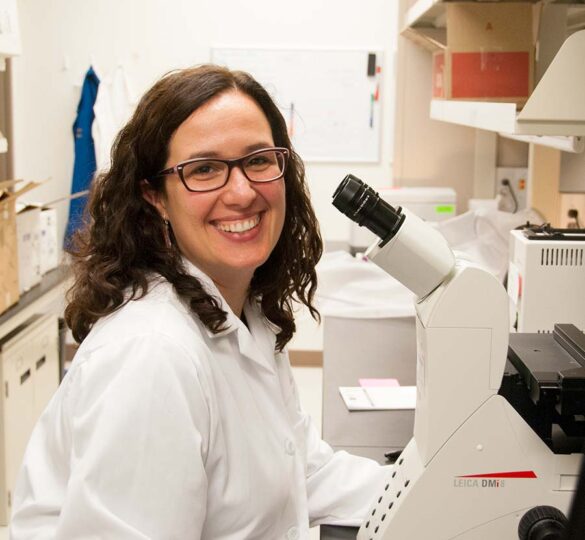Un enfoque sobre el laboratorio de la Dra. Anna La Torre en UC Davis

“Me convertí en científica porque soy una persona muy curiosa, y siempre quise saber cómo funcionan las cosas, cómo trabajan las células.”
La Dra. Anna La Torre es una profesora asociada del Departamento de Biología Celular y Anatomía Humana en la Facultad de Medicina de la Universidad de California en Davis (School of Medicine, University of California, Davis).
El laboratorio de la Dra. La Torre se centra en reproducir células ganglionares retinianas a partir de células madre para mejorar el crecimiento axonal y la supervivencia celular y, en última instancia, utilizar estas células como células donantes en los tratamientos de sustitución celular.
La Dra. La Torre es una de las investigadoras principales de la iniciativa de restauración de la visión Catalyst for a Cure (CFC3), junto con sus colegas el Dr. Xin Duan (Universidad de California, San Francisco); el Dr. Yang Hu (Universidad Stanford) y el Dr. Derek Welsbie (Universidad de California, San Diego).
“El objetivo del equipo de Catalyst for a Cure es reunir nuestros conocimientos para encontrar las formas de restaurar la visión de los pacientes que la han perdido por un glaucoma”, dijo la Dra. La Torre. “La restauración de la visión es un objetivo realmente desafiante. Estamos intentando encontrar la manera de proteger las células nerviosas que aún están ahí intentando reconectar los axones de las células ganglionares retinianas”. Este enfoque, llamado neuroprotección, es una estrategia terapéutica para evitar que las neuronas afectadas por el glaucoma mueran.
En colaboración con los otros investigadores de CFC, el laboratorio de la Dra. La Torre también está trabajando para desarrollar y experimentar con tecnologías a fin de trasplantar células ganglionares retinianas para los tratamientos de sustitución celular. Aunque se necesita aún mucha investigación antes de que este enfoque se pueda trasladar del laboratorio a la práctica clínica, “el objetivo final es que podamos recolectar las células que desarrollemos en el laboratorio, trasplantarlas en el ojo de un paciente y encontrar una forma de reconectar de la manera correcta las conexiones perdidas del cerebro”, dijo la Dra. La Torre.
Anna La Torre creció en Campdevanol, un pequeño pueblo cerca de los Pirineos en Cataluña (España). Se inscribió en la Universidad de Barcelona para estudiar biología y comenzó su carrera científica impulsada por la curiosidad. Concretamente, cómo los organismos se desarrollan por sí mismos a partir de una única célula.
“Me convertí en científica porque soy una persona muy curiosa, y siempre quise saber cómo funcionan las cosas, cómo trabajan las células”, nos contó Anna. “Pero también, durante mi postdoctorado, decidí que realmente quería hacer una diferencia para la salud humana y hacer una investigación que fuera significativa y mejorara las vidas de las personas”.